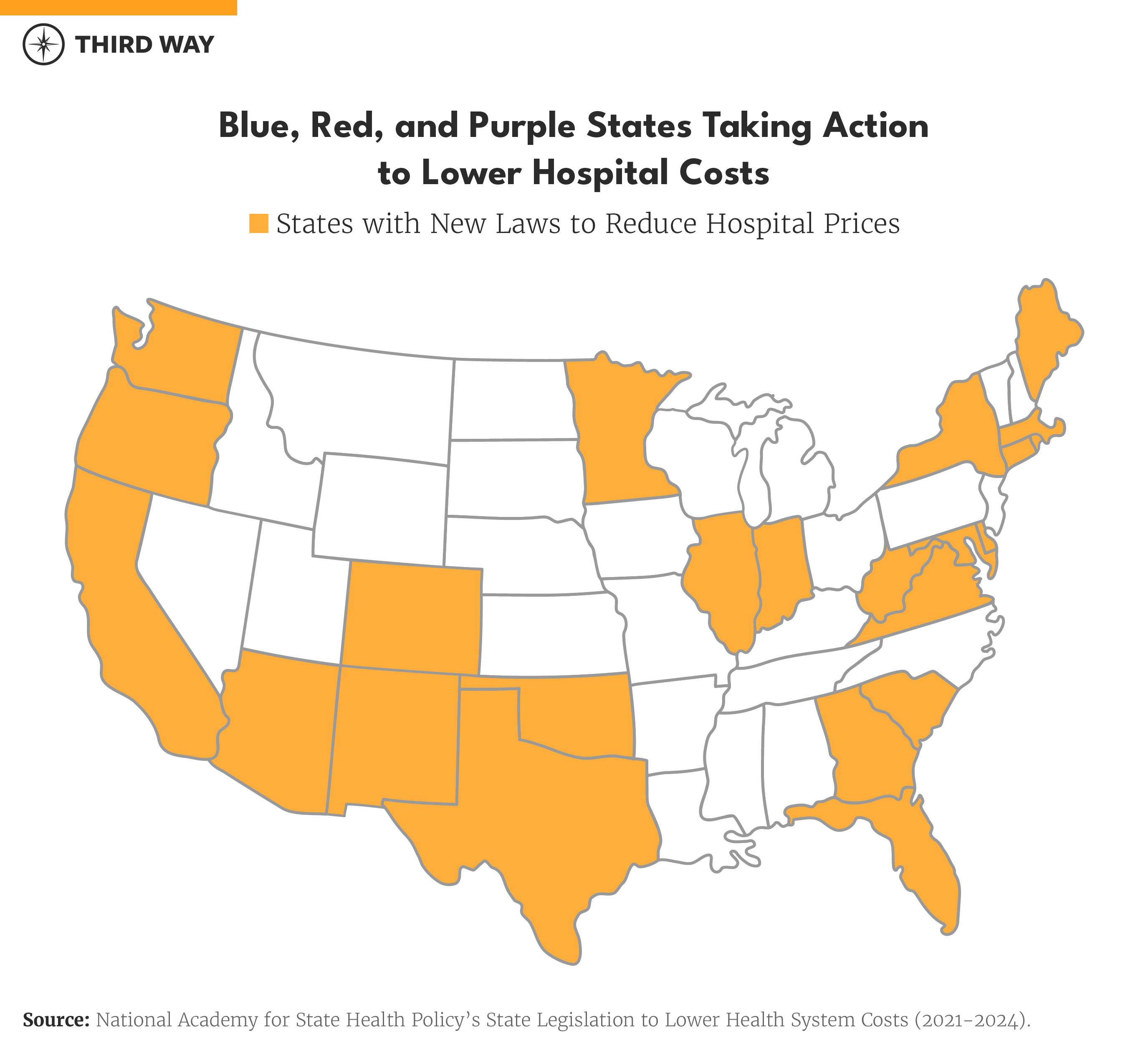The Progressive Case for Hospital Reform

How are you lowering costs for American families?
That is the central question for policymakers in 2025. When it comes to health care costs, the Trump-led GOP trifecta clearly has knives out for mainstream health care protections, from cutting Medicaid to gutting the Affordable Care Act. Democrats are—and should be—fighting against such efforts that shift costs to patients and American families. But amid Republican overreach on health care, one area to make important progress is reigning in hospital costs.
Hospital reform is likely to be part of the policy debate in 2025, building on recent bipartisan momentum to address structural issues that drive up costs for patients. While Democrats will say no to a lot of Republican efforts in 2025, hospital reform is an area that both parties can get behind. In this memo, we lay out three reasons why Democrats should embrace hospital reform.
First, hospital affordability aligns with Democrats’ values. Democrats are all about lowering health care costs and guaranteeing access to care. Right now, patients are struggling to afford high out-of-pocket costs and premiums due to high hospital prices. Hospital care accounts for a third of all health care spending. Hospital prices are increasing faster than drugs, physician care, and any other type of medical care.
Reforms to make hospital care more affordable and address the root causes, like consolidation in hospital markets, would go a long way in lowering costs for everyday Americans. Employers that pay for their employees’ coverage would also see benefits. And when employers pay less in health care, that leaves more space for them to invest in better employee benefits, increased wages, or more jobs. The savings from hospital reforms could also be reinvested throughout the health care system to improve access and coverage, including boosts in funding for hospitals serving rural communities and low-income populations. Because hospital affordability would also lower patients’ out-of-pocket costs, it would also reduce the burden of medical debt. With 100 million Americans holding $220 billion in medical debt, mostly from hospitals, hospital reforms would prevent patients from getting hit with medical debt.
Second, Democrats need an alternative to Republican overreach on health care. In the new Congress, the GOP is cutting Medicaid and the Affordable Care Act in the name of “fiscal responsibility.” Hospital reform offers a fiscally responsible alternative. And, if a bipartisan deal is possible or when Democrats regain power, hospital reforms can help pay for policies to expand the ACA and reduce premiums and out-of-pocket costs.
At the end of 2025, the ACA advance premium tax credit is set to expire. These expanded credits are saving people $700 a year on average and, without action, 2.2 million Americans will lose coverage next year. If a bipartisan deal is in the cards for 2025, bipartisan reforms to lower hospital prices can pay for an extension and avert this subsidy cliff.
If Republicans don’t come to the table, Democrats can use hospital reforms when they come back into power. The major federal savings could be used to finance ACA expansions and rolling back Republican cuts to the Medicaid program.
Lastly, policies to lower hospital prices are bipartisan and very popular. Last Congress, the House of Representatives passed the Lower Costs, More Transparency Act to lower seniors’ costs for physician-administered drugs provided in hospital-owned clinics. The Committee on Education and the Workforce passed legislation with bipartisan support to prevent hospitals from charging patients for facility fees for telehealth services. The Senate Health Committee passed a health care package that included the bill to ban anticompetitive contracting terms that lead to higher prices and a ban on hospitals’ facility fees for telehealth, evaluation and management services, and behavioral health. Additionally, Senators Bill Cassidy (R-LA) and Maggie Hassan (D-NH) introduced framework legislation to lower hospital prices for seniors receiving routine care ordinarily provided in physician offices.
Hospital reform at the state level has also made significant strides in blue, purple, and red states. Below is a map of states that passed new laws to make hospital care more affordable in the last four years.

Hospital reform isn’t just good policy—it also happen to poll very well. While support is widespread on both sides of the aisle, polling is even stronger with Democratic voters. Here are some examples:
- 87% of all voters and 90% of Democrats support hospital price transparency.
- 85% of all voters and 89% of Democrats support limiting or banning hospital facility fees.
- 75% of all voters and 80% of Democrats support preventing hospitals from engaging in business tactics that reduce competition.
- 74% of all voters and 78% of Democrats support increasing limiting hospital mergers and acquisitions.
Conclusion
Democrats will have to oppose a lot in 2025. But they shouldn’t reflexively say no to hospital reform. After all, modernizing hospital finances aligns with Democratic values to make health care more affordable, presents an alternative to Republican overreach on other issues, and has bipartisan support from the public and in Congress.
Downloads
Subscribe
Get updates whenever new content is added. We'll never share your email with anyone.



